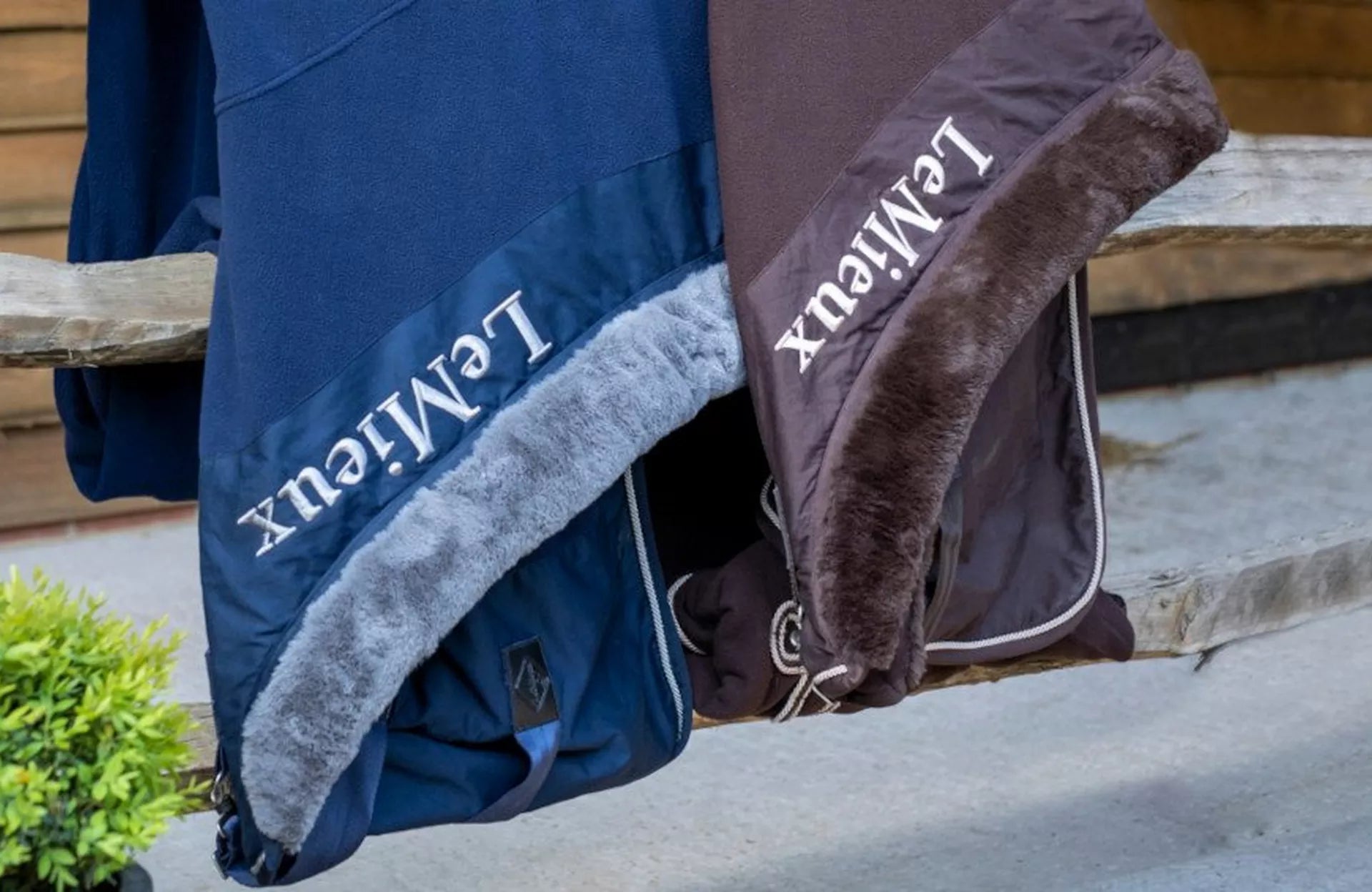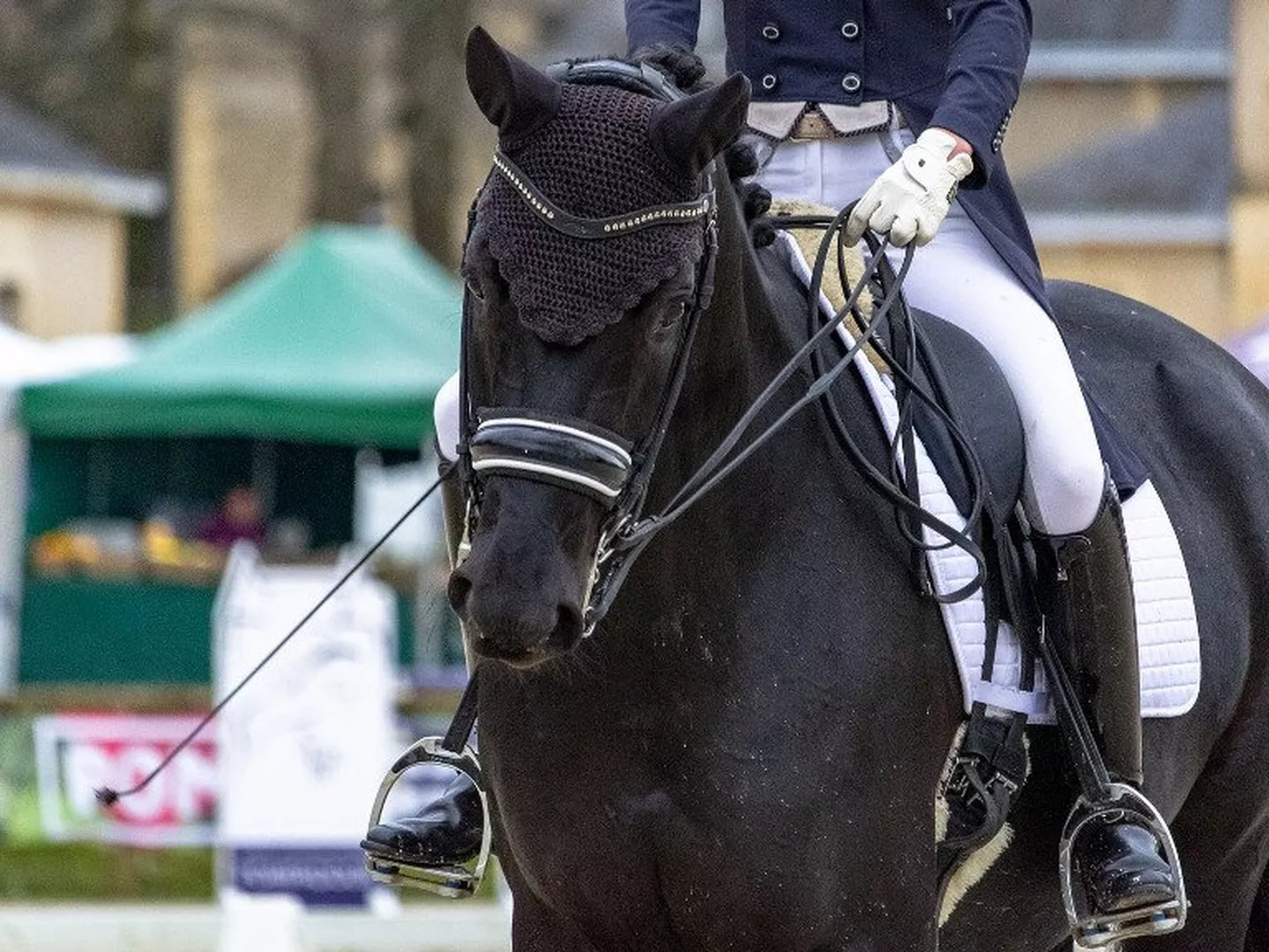Summer Hoof Care
We’ve all heard the saying, you know what’s coming… 'No Hoof, No Horse!' So, with the clichés out of the way it’s time to talk summer hoof care.
We know it’s a little (very) hard to believe but the blistering temperatures we’ve seen so far this summer are here to stay. This means it's time to swat up on summer hoof care, from anatomy and basic hoof care tips to common problems and how to solve them.
Anatomy
First thing’s first, let's take a look at the anatomy of a horses hoof. You might be tempted to skip this bit but don’t, it will help you to communicate more effectively with your farrier and help you decide which products to use.
The horse's hoof is made up sensitive and insensitive tissues. The insensitive areas are those which are visible, including the hoof wall, frog and sole. The insensitive tissues are those which don't contain blood vessels or nerves, thus they withstand wear and tear without causing bleeding or pain. Sensitive tissues contain blood vessels and nerves, thus if damaged they will cause pain and bleeding.

Image Source: Horse Hoof Care by Cherry Hill and Richard Klimesh
What's what?
Coronary Band (Coronet) - This is a soft band around the top of the hoof, which makes the horn that forms the hoof wall.
Hoof Wall - The hard, protective outer layer of the horse's hoof, sometimes known as horn. Made from a keratin based substance, this protects the inner hoof.
Periople - This is a thin outer layer, which forms a protective covering over the hoof wall.
Insensitive Sole - This is a tough structure that protects the sensitive sole underneath.
Frog - A triangular structure located between the heels extending half way down the foot. This absorbs concussion and provides grip. The frog also ensures a healthy blood supply to the hoof.
Collateral Clefts - The grooves either side of the frog, which allow the frog to expand when baring the horses’ weight.
Laminae - The insensitive laminae are supportive structures, attaching to the inside of the hoof wall and interlocking with the sensitive laminae on the surface of the coffin bone.
The White Line - This is the point where the sole meets the hoof wall.

Image Source: Horse Hoof Care by Cherry Hill and Richard Klimesh
Myths Demystified
Before we advise you on what you should be doing, lets get a few of the myths out of the way;
It’s good to make a horse stand in water, it keeps his hooves soft.
While they will become softer, it will also weaken the hoof making it more susceptible to bruising, excess wear, deterioration and infection.
A hoof cracks when it is too dry.
In most cases it is the opposite! Hooves crack when they are too wet as the structure is weakened.
Hoof dressings add nutrients to the hoof wall, improving the hoof quality.
The hoof wall grows from the coronet at the top. The hoof wall is essentially dead tissue, which can not utilise nutrients. It is more important that keratin production is encouraged through good nutrition, regular exercise and the and application of sealants and oils which prevent water damage.
Routine Care
Here are a few of our top tips and day-to-day musts:
- Clean out your horses feet at least once a day with a hoof pick and hoof brush.
- Check your horses feet are not abnormally warm and that the digital pulse in not excessively fast.
- Check daily for splits, cracks bruising and other signs of wear and tear.
- Ensure that your horses feet are checked by a farrier regularly. Shod horses should see the farrier every four to six weeks, unshod horses every six to ten weeks.
Common Problems
Laminitis
In a blog about summer hoof care it was only a matter of time before we had to mention it, the word every pony owner dreads... laminitis.
Symptoms: Reluctance to move, increased digital pulse, increased heat in the hoof, walking heel to toe and leaning back on the hind feet.
Causes: The predominant cause is an overload of soluble carbohydrates in the digestive system.
Treatment: Call the vet immediately for advice and remove the horse from grass.
Prevention: Feed a high fibre diet, restrict the amount grass in the diet, closely monitor the horses weight and ensure your horse receives regular visits from the farrier. You might be interested to know, we stock a range of supplements which may be beneficial including Global Herbs Laminitis Prone Powder/Liquid, NAF Five Star Laminaze and a range of grazing muzzles.
Bruising
Symptoms: Lameness and visible bruising.
Causes: Standing on hard objects, hard ground, incorrect trimming or shoeing and failing to pick the horses feet out regularly.
Treatment: Restrict movement until healed, in extreme cases use medical boots and padding to avoid contact with hard ground.
Prevention: Shoe horses with soft feet for heavy road work, apply hoof hardeners or use hoof hardening supplements, pick out the feet regularly.
Grass Cracks/Sand Cracks
Symptoms: Grass cracks run from the ground up to the coronet band. Sand cracks run from the coronet band down the hoof to the ground.
Causes: Poor foot conformation, irregular visits from the farrier, injuries.
Treatment: If you suspect that your horse has grass/sand cracks call your farrier. They will most likely make a grove in the hoof wall above or below the crack to help it grow out. You can also feed supplements such as NAF Biotin, Global Herbs SupaHoof or Equimins® Hoof Mender to encourage healthy horn growth.
Prevention: Dietary supplements and regular oiling.
Abscesses and Infections
Symptoms: Inflammation in the hoof causes extreme lameness and an fast digital pulse. If this has been left untreated the leg will swell and the infection can burst out of the coronary band.
Causes: Seedy toe, puncture wounds, foreign objects and brushing.
Treatment: Call your vet or farrier to remove the pus and give your horse a booster tetanus jab. A poultice pad and boot should then be used to draw out the infection.
Prevention: Ensure that any damage to the external protective layers of the hoof are treated immediately. Top tip, hoof boots are a tack room must have, should your horses hoof become damaged they can be used to stop any foreign objects entering the wound and causing an infection.
Seedy Toe
Symptoms: Separation of the white line and the hoof wall, starting at the toe and progressing up the hoof wall.
Causes: Long toes, laminates and concussion on hard dry ground.
Treatment: With regular visits from the farrier and correct trimming this should grow out. Some tissue may need to be cut away and the hole filled with putty. If the horse is lame call the vet as there may be an infection.
Prevention: Regular trimming, appropriate hoof care and avoiding excessive concussion.
Prevention is better than cure!
We want to help you improve your horses hoof health before a problem starts.
Hoof oils
As we have already touched on, the hoof wall can't absorb nutrients! So when choosing a hoof oil you need to look for something that will act as a barrier. The best barriers create a waterproof seal while allowing the hoof to breath.
Nutritional
As you might expect for good hooves you need good nutrition! As a general rule horses with good overall nutrition should have healthy feet. If you are concerned about how your horses diet can impact their hooves keep an eye out for supplements which contain Biotin, Zinc, Copper, Manganese, Selenium, Vitamin C, Iodine, Lysine, Threonine, Methionate and MSM.
Exercise
Okay, so this one might need a little explaining. I'm sure you're thinking what does this have to do with hoof care, well it's all about blood flow. As is the case all over the body, good circulation means the blood delivers oxygen and the nutrients needed to keep the cells healthy.
So there you have it, the ins and outs (literally) of summer hoof care. It's incredibly useful to take some time to brush up on your hoof-care knowledge, so you can be prepared all-year-round. For the everyday owner, hooves can be a mystery subject, so we hope this blog has helped bring some clarity. Hooves are the foundation of a horse, so now you can stride out confidently this season thanks to our Summer Hoof Care guide.








